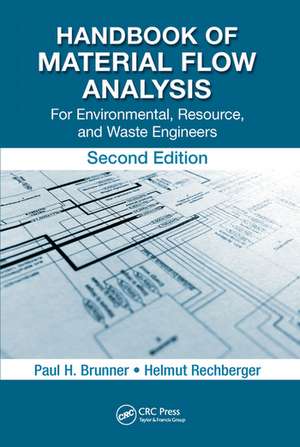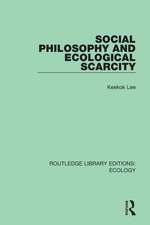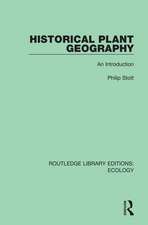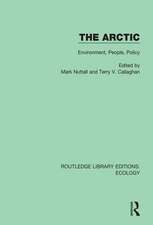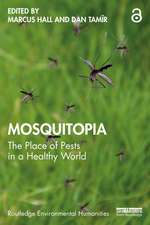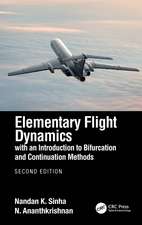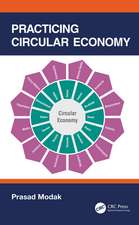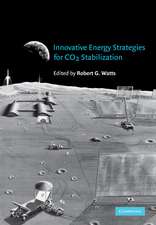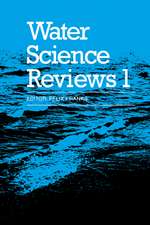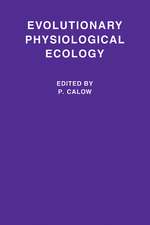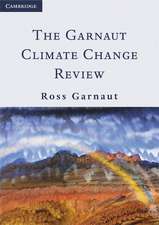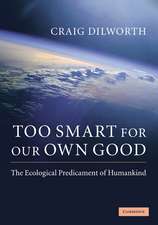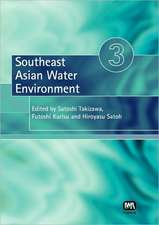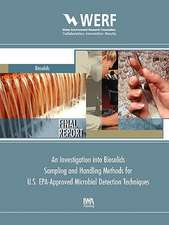Handbook of Material Flow Analysis: For Environmental, Resource, and Waste Engineers, Second Edition
Autor Paul H. Brunner, Helmut Rechbergeren Limba Engleză Paperback – 30 iun 2020
| Toate formatele și edițiile | Preț | Express |
|---|---|---|
| Paperback (1) | 359.44 lei 6-8 săpt. | |
| CRC Press – 30 iun 2020 | 359.44 lei 6-8 săpt. | |
| Hardback (1) | 853.93 lei 6-8 săpt. | |
| CRC Press – 6 dec 2016 | 853.93 lei 6-8 săpt. |
Preț: 359.44 lei
Nou
Puncte Express: 539
Preț estimativ în valută:
68.80€ • 74.76$ • 57.83£
68.80€ • 74.76$ • 57.83£
Carte tipărită la comandă
Livrare economică 21 aprilie-05 mai
Preluare comenzi: 021 569.72.76
Specificații
ISBN-13: 9780367574093
ISBN-10: 0367574098
Pagini: 454
Dimensiuni: 156 x 234 x 28 mm
Greutate: 0.72 kg
Ediția:2
Editura: CRC Press
Colecția CRC Press
ISBN-10: 0367574098
Pagini: 454
Dimensiuni: 156 x 234 x 28 mm
Greutate: 0.72 kg
Ediția:2
Editura: CRC Press
Colecția CRC Press
Public țintă
Academic and Professional Practice & DevelopmentCuprins
Preface to the Second Edition. Preface to the First Edition. Authors. Introduction. Methodology of Material Flow Analysis. Case Studies. Outlook: Where to Go? References. Index
Notă biografică
Paul H. Brunner, recognized for his groundbreaking research work in the fields of waste and resource management, is professor emeritus at the Technische Universität Wien in Vienna, Austria. Together with Peter Baccini from ETH Zurich, he published the landmark book Metabolism of the Anthroposphere, presenting a new view of the interactions among human activities, resources, and the environment. His work focuses on advanced methods for waste treatment and on concepts to assess, evaluate, and design metabolic systems. For more than 40 years, Dr. Brunner has been engaged in research and teaching in Europe, Asia, and the Americas. As a member of many boards of journals and conferences, he successfully promoted the application of material flow analysis for improving decision making in resource and waste management.
Helmut Rechberger has been a professor for resource management since 2003 and heads the Research Center of Waste and Resource Management at Technische Universität Wien. He received his professional education in Vienna with Paul H. Brunner, at ETH Zurich with Peter Baccini, and at Yale with Tom Graedel. Since then, he has been engaged in research and teaching and has become internationally acknowledged for his research work in the fields of resource and waste management. Under his lead, the material flow analysis (MFA) software STAN has been developed. His current research interests are focused on the further development of methods to advance sustainable regional and urban resource management.
Helmut Rechberger has been a professor for resource management since 2003 and heads the Research Center of Waste and Resource Management at Technische Universität Wien. He received his professional education in Vienna with Paul H. Brunner, at ETH Zurich with Peter Baccini, and at Yale with Tom Graedel. Since then, he has been engaged in research and teaching and has become internationally acknowledged for his research work in the fields of resource and waste management. Under his lead, the material flow analysis (MFA) software STAN has been developed. His current research interests are focused on the further development of methods to advance sustainable regional and urban resource management.
Recenzii
"This is the best introductory textbook for MFA currently available. It is didactically well structured and covers the most relevant tools, illustrated with practical examples covering all human activities and the most relevant resources and pollutants of the anthropogenic metabolism of industrialized societies. ¿"
—Daniel Beat Mueller, Norwegian University of Science and Technology, Trondheim, Norway
"MFA/SFA is a corner stone in environmental engineering. Without good controls of flows and stocks and estimates of how well we account for all parts of the system, no sound engineering platform can be established, no suitable technology can be introduced, and no sound decision can be made. The book Handbook of Material Flow Analysis: For Environmental, Resource, and Waste Engineers, Second Edition, by Brunner and Rechberger is the handbook to learn from. It provides all the basics and shows numerous examples of how strong a tool MFA/SFA is in understanding how complex systems function. In addition, it introduces the free software STAN which is an excellent tool for students, researchers and practitioners. It makes doing the actual MFA/SFA easy and fun and provides a consistent template for presenting flows and stocks in a complex system. We use it at the Technical University of Denmark and you should also use it." —Thomas H. Christensen, Technical University of Denmark, Copenhagen, Denmark
"One of the 21st century’s challenging targets is sustainable society developments. Paul and Helmut have proposed Material Flow Analysis, which would become an important and inevitable tool to build a sustainable society. This book covers full of important information on the methodology and readers concerned will learn effective systems for resource conservation and reducing the waste flows and environmental burdens. Every public policy maker and research expert across the world, especially in Asian countries with rapid economic growth, shoul
—Daniel Beat Mueller, Norwegian University of Science and Technology, Trondheim, Norway
"MFA/SFA is a corner stone in environmental engineering. Without good controls of flows and stocks and estimates of how well we account for all parts of the system, no sound engineering platform can be established, no suitable technology can be introduced, and no sound decision can be made. The book Handbook of Material Flow Analysis: For Environmental, Resource, and Waste Engineers, Second Edition, by Brunner and Rechberger is the handbook to learn from. It provides all the basics and shows numerous examples of how strong a tool MFA/SFA is in understanding how complex systems function. In addition, it introduces the free software STAN which is an excellent tool for students, researchers and practitioners. It makes doing the actual MFA/SFA easy and fun and provides a consistent template for presenting flows and stocks in a complex system. We use it at the Technical University of Denmark and you should also use it." —Thomas H. Christensen, Technical University of Denmark, Copenhagen, Denmark
"One of the 21st century’s challenging targets is sustainable society developments. Paul and Helmut have proposed Material Flow Analysis, which would become an important and inevitable tool to build a sustainable society. This book covers full of important information on the methodology and readers concerned will learn effective systems for resource conservation and reducing the waste flows and environmental burdens. Every public policy maker and research expert across the world, especially in Asian countries with rapid economic growth, shoul
Descriere
In this second edition of a bestseller, authors guide professional newcomers as well as experienced engineers and scientists towards mastering the art of material flow analysis (MFA) from the very beginning to an advanced state of material balances of complex systems. This book serves as a concise and reproducible methodology and a basis for ana
